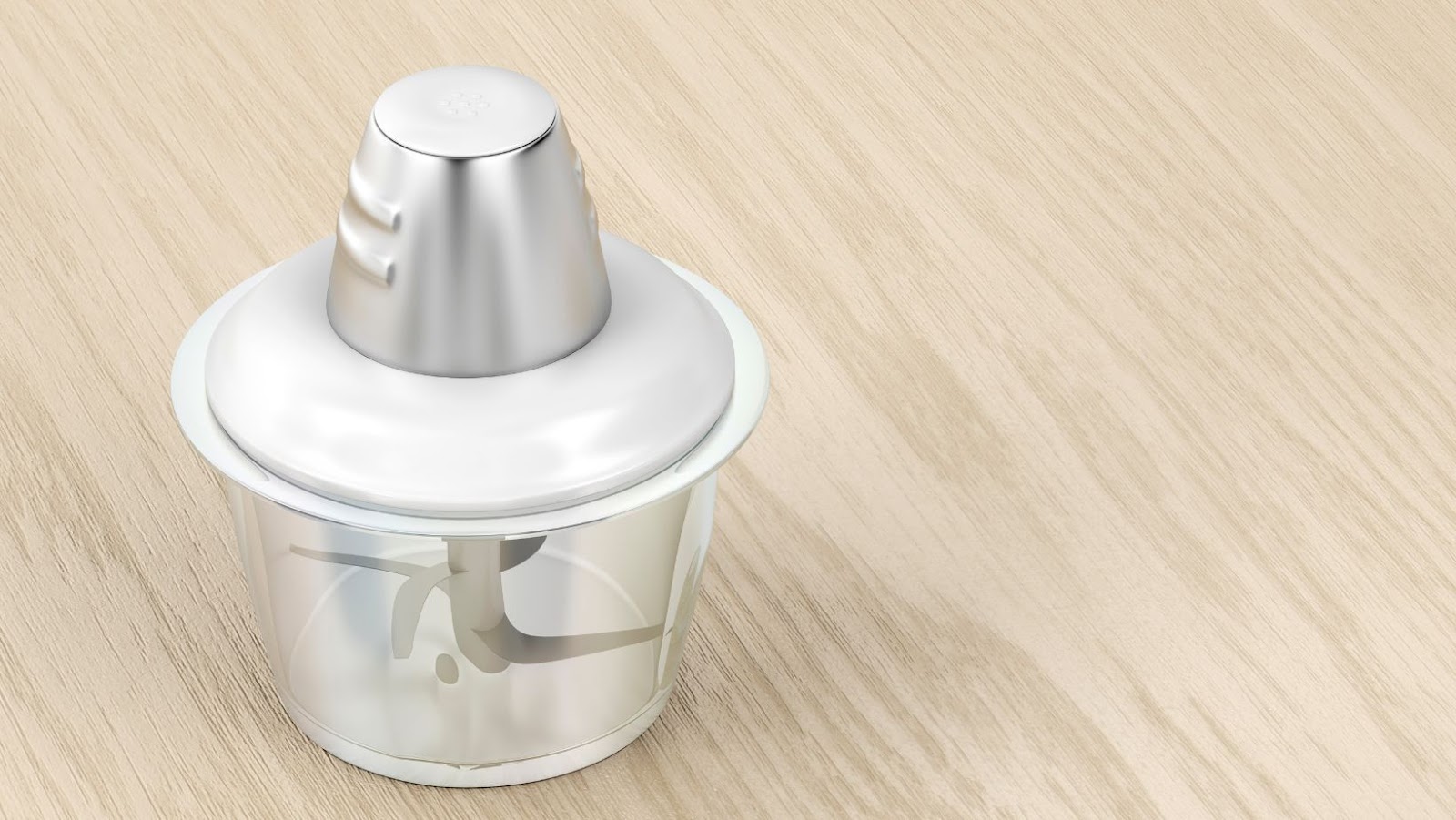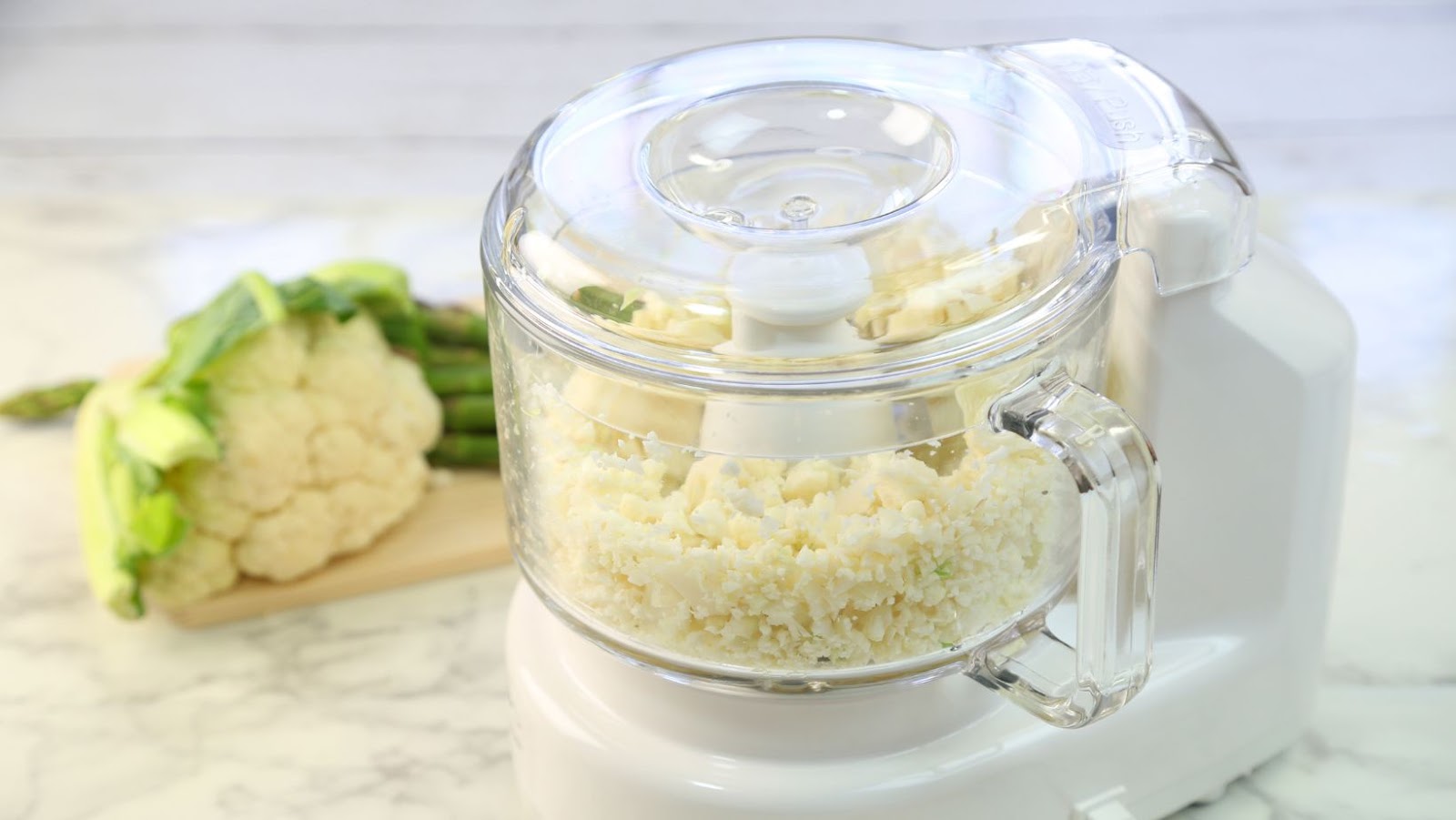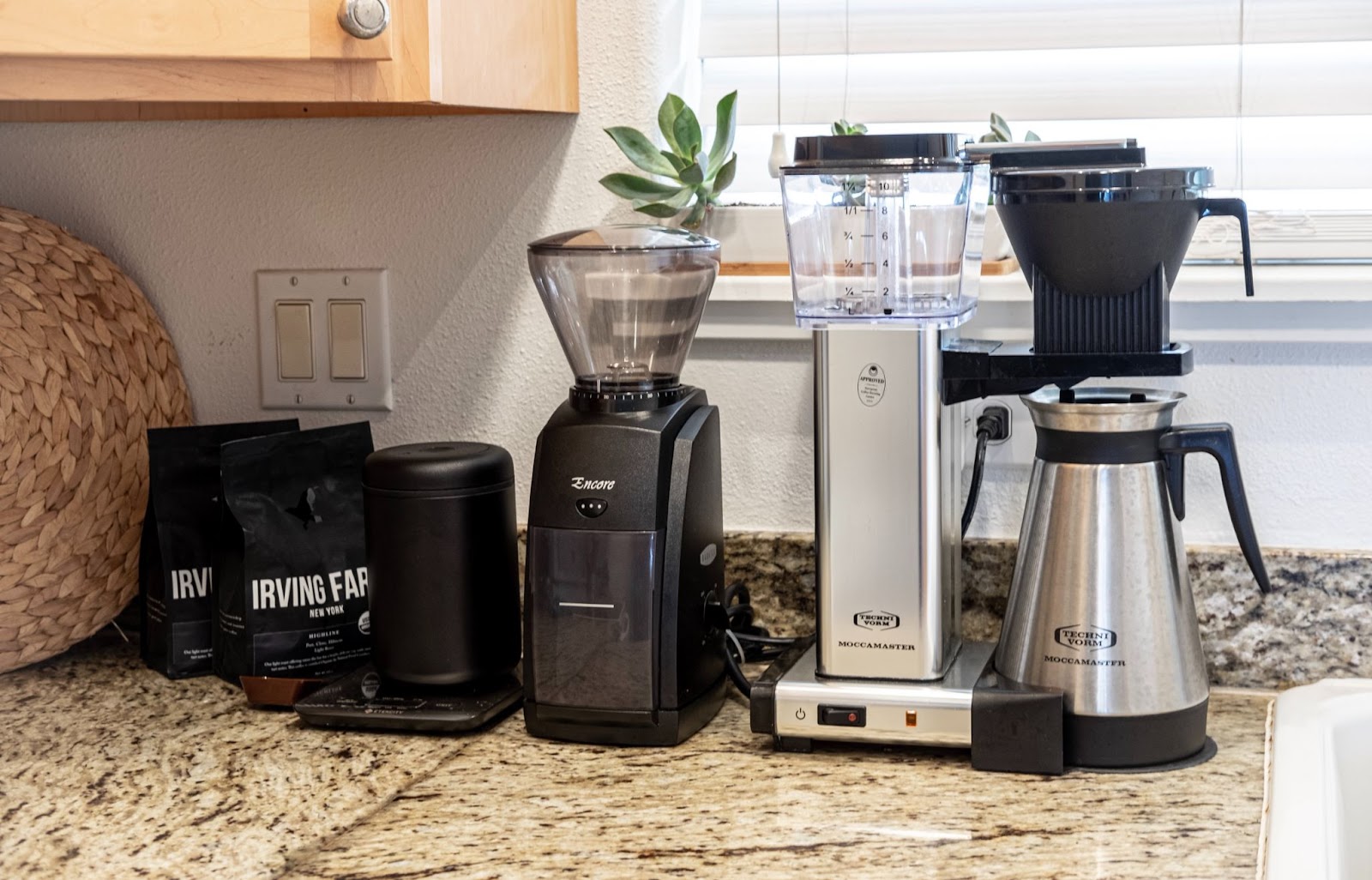Blenders and food processors are both kitchen appliances that perform similar tasks, but they have some differences. Let’s explore these differences.
|
Blender |
Food Processor |
|
Designed for liquids and purees |
Used for slicing, chopping, mixing, and grating |
|
Multiple speed settings to blend ingredients |
Large capacity bowl and interchangeable blades |
|
Produce smooth consistency drinks/mixtures. Not suitable for solid foods consistently. Supports ice-crushing as an essential feature |
Produces even cuts of food with less liquid content consistent chopping size |
It is important to note that blenders are ideal for making smoothies, milkshakes or pureeing vegetables whereas food processors are suited for slicing or chopping vegetables.
The blender can be used instead of the food processor in situations where you want your final product to be a smooth paste rather than finely cut pieces like salsa or shredded veggies. In such situations, the blender will do a more efficient job.
Don’t miss out on the perfect texture by using the wrong appliance! Before starting your next recipe, think about what tool will work best for you- the blender or the food processor?
Why settle for a smoothie when your blender can also make creamy hummus and nut butter? Time to unleash its full potential.
Can you use a blender instead of a food processor
To make your cooking tasks easy and fast, use a blender instead of a food processor. For the section “When to Use a Blender” with the topic “Can You Use a Blender Instead of a Food Processor,” we have three sub-sections: Making Smoothies and Protein Shakes, Pureeing Soups and Sauces, and Crushing Ice and Frozen Fruit, as solutions for your food preparation needs.
Making Smoothies and Protein Shakes
Blending Beverages for Optimal Health
If you want to create smoothies or protein shakes, using a blender can be a great way to get the job done effectively. This appliance not only helps you in preparing these beverages quickly but also ensures that every ingredient gets mixed well enough for optimal taste and nutrient absorption.

Here is a 3-step guide on how to make smoothies and protein shakes using a blender:
- Gather all the necessary ingredients such as fruits, vegetables, yogurt, milk, protein powder and other supplements.
- Add the ingredients into the blender according to their quantity and consistency. It is better to put liquid ingredients and supplements first so they can mix well before adding in thicker items like fruits and vegetables.
- Blend until you achieve your desired texture. If your smoothie turns out thick, add some more liquid until it reaches your preferred consistency.
It is essential to understand the power of blending when making these drinks. When blending fruits or vegetables, you are breaking them down into smaller particles that are easier for your body to digest; therefore, nutrient absorption will be higher compared to eating them whole.
Moreover, there’s no need for added sugars or preservatives because natural ingredients alone provide sweetness and flavor! For this reason alone, using a blender in preparing smoothies or protein shakes can be an important step towards maintaining optimal health.
Here are some suggestions for making delicious drinks in your blender:
- Use frozen fruits instead of fresh ones so that your mixture stays cold without diluting flavors with ice cubes.
- Don’t forget about the greens! Adding spinach or kale can enhance both flavor and nutrition content.
- Experiment with different kinds of milk like almond milk or coconut milk instead of regular cow’s milk.
By following these suggestions alongside our straightforward three-step guide, you’ll become an expert at creating perfect smoothies every time!
Give your soups and sauces a smooth identity crisis with the help of a blender.
Pureeing Soups and Sauces
Using a blender to create silky smooth pureed soups and sauces is a common practice in many kitchens. It’s an easy and efficient way to achieve the perfect texture without adding unnecessary steps.
To puree soups and sauces using a blender, follow these three simple steps:
- Allow the soup or sauce to cool before blending. This will prevent any accidents as hot liquids can expand in the blender jar.
- Add small batches of the soup or sauce into the blender jar, filling it about halfway. Be sure not to overfill the jar as this can also lead to accidents.
- Pulse or blend on high until you reach your desired consistency.
It’s important to note that if you’re using a traditional blender, you’ll need to vent the lid slightly to allow steam to escape during blending.
Using a blender for pureeing soups and sauces not only saves time but also eliminates the need for additional equipment like food mills or presses. Additionally, blenders allow for more control over texture compared to other methods.
For best results, consider investing in a high-quality blender with enough power and capacity for your needs. Prioritizing fresh ingredients will also ensure optimal flavor in pureed creations.
Crushing ice and frozen fruit? More like giving them a lesson in who’s boss.
Crushing Ice and Frozen Fruit
Blenders can be used for many things, including crushing ice and frozen fruit.
Here are three ways to achieve the perfect blend:
- Use a high-powered blender specifically designed for crushing ice and frozen fruit.
- Add liquids to ease the blending process, such as water or juice.
- Blend in short intervals, allowing the blender blades to rest in between.
Aside from these tips, it’s important to note that not all blenders are created equal. Some blenders may struggle with harder ingredients, while others may not have enough power. It’s crucial to choose a blender that fits your needs and is capable of handling tough ingredients.
Pro Tip: When blending ice, always add liquid first, then slowly add your ice cubes one at a time to ensure they blend evenly.
Ready to process some food? Just make sure it’s not something you should be blending instead.
When to Use a Food Processor
To make chopping, shredding, and mixing tasks a breeze, turn to a food processor. In order to get the most out of this versatile kitchen tool, it’s important to know what tasks it excels at. When it comes to chopping vegetables and nuts, making dough and batters, and shredding cheese and vegetables, a food processor is the go-to solution. Let’s explore the benefits of each of these sub-sections.
Chopping Vegetables and Nuts
For the task at hand- Processing Produce and Nuts, a food processor is an efficient and reliable tool. Let’s dive into four simple guidelines to ensure perfect results.
- Begin by gathering the necessary implements; a sharp blade, cutting board, and of course the vegetables or nuts of your choosing.
- Next, prepare the produce by washing and drying before trimming any unwanted bits.
- Depending on the size of your food processor, you may need to chop larger pieces into manageable chunks before feeding them carefully into the machine.
- Lastly, pulse intermittently until you achieve your desired consistency.
For optimal results, vary your processing time until you obtain the preferred outcome for each particular item.
When slicing ingredients by hand proves too taxing or laborious, a food processor may offer ease and precision to alleviate some pressure in the kitchen. Practice and patience will refine your technique until these procedures become second nature.
Don’t miss out on creating impressive dishes with perfectly processed produce – consider investing in a quality food processor today!
Making dough and batters is like therapy, except you get a delicious end result instead of an expensive bill.

Making Dough and Batters
For preparing dough and batters, a food processor can be used. It saves time and energy as compared to manual preparation.
Here’s a simple 3-step guide for using a food processor efficiently in preparing dough and batters:
- Gather all the necessary ingredients, and add them to the food processor bowl.
- Next, choose the appropriate blade attachment depending on what you want to prepare – a dough hook blade for kneading dough or a regular blade for mixing batter.
- Finally, pulse or blend until you achieve the desired consistency. For best results, refrain from overmixing or overkneading.
It is important to note that not all types of doughs and batters are suitable for food processors. In particular, those with delicate textures like puff pastry may end up being too tough if processed too much.
A fascinating fact reported by “Consumer Reports” is that most high-end food processors come with dishwasher safe bowls, lids, blades, and discs making cleanup faster and easier than manual cleaning methods.
Shredding cheese and vegetables by hand is like attempting brain surgery with a butter knife.
Shredding Cheese and Vegetables
When incorporating a food processor into your kitchen routine, it can be incredibly useful for efficiently shredding various ingredients. Whether you need to shred vegetables or cheese, using a food processor can save you time and provide consistent results.
Here is a 6-step guide for using a food processor to shred cheese and vegetables:
- Cut the cheese or vegetables into small enough pieces that they can fit into the food processor chute easily.
- Attach the shredding blade to the machine.
- Turn on the machine and feed the cheese or vegetables through the chute.
- Use a pusher tool to ensure all of the product gets fully shredded and prevent any accidents with fingers.
- Once finished, turn off the machine and carefully remove the blade for cleaning.
- Clean any remaining food bits from inside the machine before storing it away.
Additionally, using a food processor to shred ingredients can also save space in your kitchen compared to using multiple appliances that may have this function. In addition, it creates uniform shreds that enhance presentation and texture in dishes.
Interestingly, before modern technology brought us food processors, people used manual shredders or graters made of metal or wood. The first electric version of a food processor was invented by Carl G. Sontheimer in 1972 in America. Since then, these machines have become increasingly popular due to their versatility in saving time and maximizing efficiency in cooking tasks.
Choosing between a food processor and a blender is like choosing between Batman and Superman – they both have superpowers, but one is better suited for certain tasks.

Making the Decision
To make the best decision on whether to use a blender or a food processor, considering the texture and consistency needed, evaluating the quantity of ingredients, and choosing based on the desired end result, are essential. All these sub-sections will help you determine which kitchen appliance is best suited for your cooking needs.
Considering the Texture and Consistency Needed
To make an informed decision about texture and consistency, one must consider the specific qualities needed for the desired end product.
|
Considering the Desired Texture and Consistency |
|
|
Factors to Consider |
Examples |
|
Ingredients |
Flour, sugar, fats, liquids |
|
Mixing Method |
Creaming, folding-in |
|
Temperature and Time |
Baking temperature and time |
It’s crucial to keep in mind the purpose of the final product when considering texture and consistency. For example, a cake requires lightness and sponginess while a bread loaf needs to be more dense and chewy.
When it comes to baking, there are no shortcuts. Once I thought I could get away with skipping a step in my recipe because I was in a hurry. Unfortunately, I ended up with a clumpy mess instead of the perfectly smooth batter I had hoped for. From that day on, I learned that every instruction should be followed precisely to achieve the desired outcome.
Remember, the more you measure, the less you’ll regret when you serve that questionable casserole.
Evaluating the Quantity of Ingredients
When determining the appropriate amount of ingredients required, precise calculations are necessary. Accurate evaluation of ingredient quantities can guarantee that the dish maintains its desired flavour and texture.
|
Ingredient |
Amount (grams) |
Purpose |
|
Flour |
250g |
Structure |
|
Sugar |
150g |
Sweetness |
|
Milk |
200ml |
Texture |
Consider utilizing a kitchen scale to ensure correct measurements. Eye measurements or guesswork may result in an undesirable outcome.
It is vital that each item’s importance is considered when evaluating ingredient amounts. The recommended quantity advocated by experienced chefs and recipe guides should be taken into account.
To ensure accurate evaluations, experiments with ingredient quantities can be performed to determine the optimal amount for specific dishes. By modifying the quantity of certain components, one can achieve differing results in texture and taste.
Who needs a crystal ball when you can just pick your end result and work backwards? It’s like reverse-engineering your future.
Choosing Based on Desired End Result
Understanding the Desired Outcome
When faced with decisions, it’s crucial to understand the desired outcome before making a choice. Analyzing desired outcomes can aid in attaining goals efficiently.
Factors that affect the result vary according to the decision type. A table can be an indispensable tool in comprehending each aspect and its likely results. For instance, weighing the pros and cons of buying a new home against remodeling an existing one can be achieved using a simple table.
|
Options |
Pros |
Cons |
|
Buy new home |
Brand-new infrastructure, no need for upkeep or repairs |
High upfront cost, relocation |
|
Remodel existing home |
Familiarity with neighborhood and location; high potential added value; lower financial requirements |
Long-term unfamiliarity with reworked structures; often disrupts daily life; risks may multiply |
Once all the choices are laid out clearly in front of you, making an informed decision becomes much easier than without any context.
When selecting a course of action to take, it is also helpful to consider factors like duration, feasibility, resource accessibility, and personal preference before arriving at a conclusion on what steps to take next.
Here are some suggestions:
- When considering multiple options for moving forward, break tasks down into parts to determine which ones will require more time or resources.
- Trying new approaches when lacking information or prior knowledge may lead to unfavorable outcomes. Consider reaching out to experts or seeking advice from people who have undergone similar circumstances.
- Never underestimate personal preference! It’s detrimental to ignore your own feelings and instincts while following another’s suggestions blindly. Sure, you can use a blender instead of a food processor – just don’t blame me when your hummus turns into a liquified mess.
